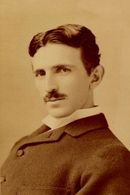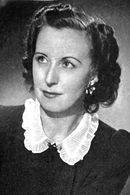Nikola Tesla, a Serbian-American inventor, electrical engineer, mechanical engineer, and futurist, was born on June 28, 1856, and passed away on January 7, 1943. He is renowned for his pivotal contributions to the development of the modern alternating current (AC) electricity supply system.
Tesla's early life and education took place in the Austrian Empire, where he studied engineering and physics in the 1870s without receiving a formal degree. He gained practical experience in the early 1880s by working in telephony and at Continental Edison in the emerging electric power industry.
In 1884, Tesla emigrated to the United States, where he became a naturalized citizen. He initially worked at the Edison Machine Works in New York City before striking out on his own. With the support of partners who financed and marketed his ideas, Tesla established laboratories and companies in New York to develop a wide range of electrical and mechanical devices.
Tesla's alternating current (AC) induction motor and related poly-phase AC patents, licensed by Westinghouse Electric in 1888, brought him significant financial rewards and became the cornerstone of the poly-phase system that the company eventually marketed.
Throughout the 1890s, Tesla continued to experiment with mechanical oscillators/generators, electrical discharge tubes, and early X-ray imaging. He also built a wireless-controlled boat, one of the first-ever exhibited. Tesla's public lectures were notable for his showmanship, and he became well-known as an inventor, demonstrating his achievements to celebrities and wealthy patrons at his laboratory.
In the 1890s, Tesla pursued his ideas for wireless lighting and worldwide wireless electric power distribution through high-voltage, high-frequency power experiments in New York and Colorado Springs. In 1893, he made pronouncements on the possibility of wireless communication using his devices.
Tesla's unfinished Wardenclyffe Tower project, an intercontinental wireless communication and power transmitter, was his most ambitious endeavor. Although he ran out of funding before completing the project, Tesla continued to experiment with a series of inventions in the 1910s and 1920s with varying degrees of success.
After his death in New York City in January 1943, Tesla's work fell into relative obscurity until 1960, when the General Conference on Weights and Measures named the SI unit of magnetic flux density the Tesla in his honor. Since the 1990s, there has been a resurgence in popular interest in Tesla's life and work.













